What is a Spoon Candy Machine?
A Spoon Candy Machine is a specialized device designed to create candy treats that are molded onto spoons. These machines have become increasingly popular in the candy-making industry due to their ability to automate the production process, providing high volumes of fun, unique confections. The innovation behind this equipment allows for both high efficiency and creativity, making it a valuable asset for manufacturers aiming to stand out with inventive candy products.
Key Components of a Spoon Candy Machine
A Spoon Candy Machine is a highly specialized piece of confectionery equipment used to produce candy molded onto spoons. This innovative machine streamlines the production process and ensures consistent quality in each batch. To understand how this equipment operates efficiently and reliably, it’s essential to explore the key components that make up the machine. Each part plays a crucial role in shaping, molding, and cooling the final product.
1. Candy Heating and Mixing System
At the core of any Spoon Candy Machine is the heating and mixing section. This component is responsible for melting and blending the raw candy ingredients until they reach the desired consistency and temperature. Uniform heating is essential for maintaining product consistency, preventing crystallization, and ensuring smooth pouring. The mixing system also ensures that any added flavors or colorants are evenly distributed throughout the batch.
2. Molding Unit
The molding unit is where the candy takes on its iconic spoon shape. This section includes precision-designed molds that are shaped to accommodate both the candy and the plastic or edible spoon. As the hot candy mixture is poured into the molds, it begins to take shape. The quality of this component directly affects the final look and structural integrity of the finished product.
3. Spoon Feeding Mechanism
A critical part of the Spoon Candy Machine is the mechanism that places spoons into position before the candy is poured. This system must align each spoon perfectly within the mold cavity. Proper alignment ensures that the candy bonds securely to the spoon and maintains structural stability after cooling. Advanced machines may feature automatic spoon feeders to enhance production speed and minimize manual labor.
4. Pouring and Dispensing System
Once the molds and spoons are aligned, the candy mixture is dispensed into each cavity. The pouring system must deliver the mixture smoothly and accurately to avoid spillage and wastage. This component often works in sync with the temperature control system to maintain the ideal viscosity for pouring. Precise control at this stage is essential for producing uniform candy spoons with consistent weight and thickness.
5. Cooling Section
After pouring, the filled molds are transferred to a cooling section where the candy solidifies. This component plays a vital role in ensuring product quality. A gradual and controlled cooling process helps avoid cracks, bubbles, or deformities in the candy. Some Spoon Candy Machines use air cooling, while others may utilize chilled trays or cooling tunnels depending on the production scale.
6. Ejection and Collection System
Once the candy has hardened, the finished spoons must be carefully removed from the molds. The ejection system gently separates the candy from the mold without causing damage. The collection system then gathers the completed products for inspection, packaging, or further processing. A reliable ejection mechanism reduces product breakage and ensures consistent output quality.
7. Control Panel and Automation Features
Modern Spoon Candy Machines come with a user-friendly control panel that allows operators to monitor and adjust various functions such as temperature, timing, speed, and mold alignment. These automation features not only improve efficiency but also reduce the likelihood of human error. Programmable settings can streamline repetitive processes and enhance overall productivity.
8. Safety and Hygiene Features
Safety is a top priority in any food processing equipment. A quality Spoon Candy Machine is equipped with protective enclosures, emergency stop buttons, and overload protection to ensure safe operation. In addition, hygiene components such as stainless steel surfaces, easy-to-clean trays, and closed systems help maintain sanitary conditions during production. These features are essential for meeting food industry regulations and delivering safe, clean products to consumers.
9. Optional Decorative Add-Ons
Some machines include optional add-on systems for decorating the candy spoons, such as sprinkling sugar crystals, embedding logos, or layering multiple colors. While not part of the core components, these systems offer an added dimension of customization for manufacturers who want to differentiate their products in the marketplace.

The Technology Behind Spoon Candy Machines
The evolution of confectionery production has been significantly shaped by automation and innovation, and the Spoon Candy Machine stands as a prime example of how modern technology can transform traditional candy-making processes. Behind its simple output — a spoon with a candy head — lies a sophisticated system of engineering and digital integration. Understanding the technology that powers this equipment offers insight into why it has become a preferred solution for many candy manufacturers.
Integration of Smart Control Systems
A core element of the Spoon Candy Machine is its intelligent control system. These systems allow operators to manage various stages of production through a centralized interface. Touchscreen panels, programmable logic controllers (PLCs), and real-time data monitoring work together to improve precision and repeatability.
By automating temperature regulation, dispensing speed, molding timing, and cooling intervals, the technology reduces the potential for human error. It also ensures that each candy spoon meets consistent quality standards — a critical factor in large-scale commercial production.
Precision Temperature Management
Candy production requires exact temperature control at multiple stages, from melting and blending ingredients to pouring and solidifying the final product. The Spoon Candy Machine integrates advanced heating elements and thermal sensors that maintain stable temperatures throughout the operation.
Too much heat may cause caramelization or burning, while insufficient heat can affect the fluidity of the mixture. Smart systems monitor the candy's condition in real time, automatically adjusting temperatures to suit the desired consistency and flow for molding.
Automated Dispensing and Molding Technology
A major innovation in the design of modern Spoon Candy Machines is the precise coordination between the candy dispensing unit and the mold alignment system. High-speed servo motors and synchronized actuators control the flow of the candy mixture, ensuring it is evenly distributed into each mold cavity.
This level of accuracy reduces waste and guarantees uniformity in size and weight. The automation also allows manufacturers to produce intricate or customized designs without additional manual handling, which increases output efficiency while lowering operational costs.
Synchronized Spoon Placement Mechanism
The spoon alignment system is another key technological feature. In advanced machines, robotic arms or auto-feeders position each spoon into the mold precisely before the liquid candy is poured. This precise synchronization ensures that the candy adheres properly to the spoon, forming a strong bond that holds during cooling, packaging, and transport.
This feature is particularly beneficial for manufacturers producing high volumes or working with multiple mold designs. It minimizes production errors and improves workflow continuity.
Controlled Cooling Systems
Once molded, the candy must be cooled in a controlled environment to ensure it sets correctly without cracking or deforming. The Spoon Candy Machine uses integrated cooling systems, which may include forced air, chilled conveyors, or temperature-regulated chambers.
This controlled process helps in achieving a smooth surface finish and optimal hardness. Cooling speed and intensity are adjusted according to the type of candy being produced, offering flexibility for manufacturers to work with a range of recipes and ingredients.
Modular and Scalable Design
Modern Spoon Candy Machines are often built with a modular design, allowing different sections to be added or removed based on production requirements. Whether a manufacturer needs to expand output or incorporate new features, the modular structure supports growth without the need for a complete equipment overhaul.
This flexibility is enhanced by software updates and digital integration, which keep the machinery adaptable to changing production needs and evolving confectionery trends.
Emphasis on Energy Efficiency and Sustainability
With growing industry focus on environmental responsibility, many spoon candy manufacturing systems now incorporate energy-efficient motors, insulated heating chambers, and low-waste production techniques. Some machines are designed to reclaim unused materials or reduce idle energy consumption, making them more eco-friendly.
These technological advancements not only reduce operational costs but also align with global sustainability goals — an increasingly important consideration for today's manufacturers.
Data-Driven Production Insights
Data analytics is becoming a cornerstone of industrial machinery, and the Spoon Candy Machine is no exception. Many machines collect and analyze production data, offering insights into output rates, downtime, material usage, and maintenance schedules. This data can be used to improve efficiency, reduce errors, and plan preventative maintenance.
With remote monitoring and cloud-based dashboards, factory managers can oversee production in real time, even from offsite locations. This digitization adds a new layer of intelligence to the candy manufacturing process.
The Various Types of Spoon Candy Machines and Their Applications in Confectionery Production
As the demand for innovative and visually appealing confectionery continues to rise, the Spoon Candy Machine has evolved to offer a variety of models tailored to different production needs. From small-scale operations to industrial-level production, manufacturers can now choose from several types of machines, each designed for specific applications.
Types of Spoon Candy Machines
1. Manual and Semi-Automatic Spoon Candy Machines
These machines are typically used by small businesses or artisanal candy producers. They require partial human intervention for operations such as spoon placement, mold filling, or candy ejection. While slower than automated models, they offer flexibility for producing smaller batches and experimenting with custom designs or recipes.
Advantages:
Cost-effective for small-scale production
Ideal for customized or seasonal products
Allows for greater control over each step of production
2. Fully Automatic Spoon Candy Machines
Fully automatic systems are designed for high-output, continuous production environments. These machines automate the entire process — from ingredient heating and mixing to spoon positioning, molding, cooling, and final product collection. They are commonly used in large factories that supply retail chains or export products globally.
Advantages:
High production speed and efficiency
Consistent product quality
Minimal human labor required
3. Rotary Spoon Candy Machines
Rotary models use a circular mold design to optimize space and maximize output. The rotary structure allows multiple units to operate simultaneously, increasing the production rate. These machines are particularly efficient for mass-producing uniform candy spoons with high precision.
Advantages:
Space-saving and efficient
Continuous operation with minimal downtime
Suitable for uniform, large-scale production
4. Customized Spoon Candy Machines
Some manufacturers require equipment tailored to unique product specifications, such as special mold shapes, dual-layer candy designs, or integration with other processing lines. Customized Spoon Candy Machines are built to meet these specific needs and often come with additional modules for flavor layering, packaging, or decoration.
Advantages:
Designed for specialized or proprietary products
Offers competitive advantages in niche markets
Enhances product diversity
Applications of Spoon Candy Machines in the Food Industry
The use of the Spoon Candy Machine extends beyond traditional confectionery. Its versatility makes it an ideal solution for a variety of applications in the broader food and snack industry.
1. Confectionery Production
The most common use of the machine is in making candy spoons — edible treats that are both fun and functional. These candy spoons are popular in candy shops, gift boxes, and novelty packaging. Different flavors, colors, and designs can be easily incorporated, offering endless customization options.
2. Dessert Toppings and Garnishes
In upscale bakeries and dessert cafés, candy spoons are used as edible garnishes for cakes, puddings, and parfaits. The Spoon Candy Machine allows chefs and producers to create decorative elements that enhance both visual appeal and taste.
3. Coffee and Hot Chocolate Enhancers
Flavored candy spoons — such as those made with caramel, mint, or chocolate — are increasingly used as stirrers for hot beverages. The heat melts the candy gradually, adding flavor to drinks like coffee, tea, and hot chocolate. These products are often marketed as premium drink companions, especially during holiday seasons.
4. Children's Snacks and Novelty Items
In the children's food segment, spoon-shaped candies are a hit due to their playful design and ease of use. Safe, hygienic, and mess-free, these treats are commonly sold in individual packaging or party packs. The Spoon Candy Machine enables mass production of such items while maintaining strict hygiene standards.
5. Promotional and Seasonal Products
Businesses often leverage spoon candy as promotional giveaways or limited-edition seasonal products. Whether for Valentine's Day, Halloween, or company branding events, the machine's adaptability allows for fast turnaround on custom orders and themed designs.
6. Health-Oriented Edible Supplements
Some producers use candy spoon molds to create vitamin-infused or herbal supplements in an appealing form. The machine's capability to process different ingredients and adjust mold sizes makes it suitable for producing chewable or dissolvable products aimed at health-conscious consumers.
| Category | Type of Spoon Candy Machine | Description | Advantages |
|---|---|---|---|
| Manual & Semi-Automatic | Manual and Semi-Automatic Spoon Candy Machines | Used by small businesses or artisanal producers; requires partial human intervention for spoon placement, mold filling, or candy ejection. | - Cost-effective for small-scale production - Ideal for custom or seasonal products - Greater control over production |
| Fully Automatic | Fully Automatic Spoon Candy Machines | Automates the entire production process, from ingredient heating and mixing to molding, cooling, and ejection. Designed for high-output, continuous production in large factories. | - High speed and efficiency - Consistent product quality - Minimal labor required |
| Rotary Models | Rotary Spoon Candy Machines | Features circular mold design with multiple units working simultaneously for high output. | - Space-saving - Continuous operation with minimal downtime - Suitable for large-scale production |
| Customized Systems | Customized Spoon Candy Machines | Tailored to specific needs, including custom molds, dual-layer designs, or integration with other systems. | - Ideal for specialized or proprietary products - Competitive edge for niche markets - Enhances product diversity |
| Confectionery Production | General Application | Commonly used to produce candy spoons for retail, gift boxes, and novelty packaging. | - Fun, customizable candy treats - Popular in gift sets and novelty packaging |
| Dessert Toppings & Garnishes | General Application | Used in upscale bakeries and dessert cafés to create edible garnishes for cakes, puddings, and other desserts. | - Enhances visual appeal and taste - Used for gourmet and premium dessert products |
| Coffee & Hot Chocolate Enhancers | General Application | Candy spoons flavored with caramel, chocolate, or mint, used as stirrers for hot beverages. Gradual melting adds flavor to drinks like coffee or hot chocolate. | - Premium drink companions - Popular during holiday seasons |
| Children's Snacks & Novelty Items | General Application | Spoon-shaped candies are ideal for children's snacks and are mess-free, safe, and hygienic. These products are often sold individually or in party packs. | - Appealing to children - Safe and easy to use - Popular in party packs |
| Promotional & Seasonal Products | General Application | Often used as promotional giveaways or seasonal items (e.g., Valentine’s Day, Halloween) with custom designs. | - Customizable for promotions - Limited-edition seasonal products |
| Health-Oriented Supplements | General Application | Spoon molds used to create vitamin-infused or herbal supplement candy. | - Health-conscious format - Chewable or dissolvable supplements in candy form |
Benefits of Using Spoon Candy Machines
The Spoon Candy Machine has become an essential tool for modern candy manufacturers due to its efficiency, versatility, and ability to meet growing market demands. Whether you're a small artisan candy maker or a large-scale production facility, this machine offers numerous benefits that can help streamline production processes, improve product quality, and increase profitability.
1. Increased Production Efficiency
One of the primary advantages of using a Spoon Candy Machine is its ability to significantly increase production efficiency. By automating key steps in the candy-making process, such as molding, pouring, and cooling, manufacturers can produce large volumes of candy spoons in a fraction of the time it would take using manual methods. This efficiency allows businesses to scale up production, meet high demand, and reduce lead times.
Key Benefits:
Faster production rates compared to manual methods
Increased output per unit of time
Ability to handle large-scale production runs without compromising quality
2. Consistent Product Quality
Consistency is a critical factor in food manufacturing, especially in the candy industry, where consumers expect uniformity in size, shape, and flavor. The Spoon Candy Machine ensures that each candy spoon produced is identical in terms of weight, size, and texture. Automated systems maintain precise control over factors like pouring speed, mold placement, and cooling times, resulting in products that meet strict quality standards.
Key Benefits:
Consistent size, shape, and texture for each candy spoon
Uniform quality throughout large production runs
Reduced risk of defects or inconsistencies in the final product
3. Customization and Versatility
Another major benefit of a Spoon Candy Machine is its versatility in creating a wide range of candy products. Manufacturers can easily customize the candy spoons by altering the flavors, colors, and shapes to suit specific market needs. Whether it's for holiday-themed treats, seasonal offerings, or branded promotional products, the machine can accommodate various creative designs and formulations.
Key Benefits:
Flexibility to create a wide range of products
Ability to experiment with different flavors, colors, and shapes
Ideal for producing limited-edition or seasonal candy items
4. Cost-Effectiveness
Investing in a Spoon Candy Machine can result in significant long-term cost savings for manufacturers. By automating the production process, labor costs are reduced, and production speeds are increased. The machine's precision also minimizes waste by ensuring that each batch is accurately measured and dispensed, which ultimately leads to higher yields and less raw material wastage.
Key Benefits:
Reduced labor costs by automating the production process
Less material waste due to precise measurements and dispensing
Long-term savings by increasing production capacity and reducing human error
5. Enhanced Hygiene and Safety
Maintaining high hygiene standards is a top priority in the food industry, and the Spoon Candy Machine helps ensure compliance with food safety regulations. Automated systems reduce the need for human contact with the candy, minimizing the risk of contamination. The machines are also designed with easy-to-clean surfaces and components that help maintain a sanitary production environment.
Key Benefits:
Minimizes human contact with the product, reducing the risk of contamination
Easy-to-clean components that ensure sanitation compliance
Hygienic production process that meets food safety standards
6. Scalability for Growing Businesses
As businesses grow and expand, the Spoon Candy Machine offers the scalability needed to meet increasing production demands. These machines can be adjusted to accommodate larger batches or more complex product lines, making them ideal for businesses that are scaling their operations. Whether you're entering new markets or launching new product lines, the Spoon Candy Machine can easily adapt to your changing needs.
Key Benefits:
Can scale up production without sacrificing quality or efficiency
Flexible for handling new products or larger production runs
Helps businesses expand without the need for new, expensive equipment
7. Reduced Human Error and Labor Dependence
By automating the candy-making process, the Spoon Candy Machine reduces the risk of human error, which can result in defective products or delays in production. Automated functions like temperature control, mold alignment, and candy dispensing ensure that the process is carried out with high precision, leading to fewer mistakes and higher-quality products. This reliance on technology also reduces dependency on manual labor, which can be costly and inconsistent.
Key Benefits:
Automated systems reduce the likelihood of human error
Precise control over every stage of production
Less need for manual labor, resulting in more consistent results
8. Improved Product Presentation and Appeal
In today's competitive food market, presentation is key. The Spoon Candy Machine helps manufacturers produce visually appealing candy products with a polished and professional finish. Whether you're producing candy spoons for retail or promotional purposes, the machine's ability to create uniform and aesthetically pleasing shapes enhances the visual appeal of the product, making it more attractive to consumers.
Key Benefits:
Enhanced product presentation with uniform shapes and finishes
Increased marketability due to the product's visual appeal
Ideal for creating premium or high-end candy products
9. Increased Profit Margins
By improving efficiency, reducing labor costs, and increasing production volumes, the Spoon Candy Machine ultimately helps boost profit margins. The machine’s ability to produce high-quality products at a fast rate allows businesses to meet demand more effectively while keeping costs low. Additionally, the customization capabilities allow businesses to cater to niche markets and premium segments, which can lead to higher pricing opportunities.
Key Benefits:
Higher output with lower operational costs
Ability to target premium or niche markets with custom products
Improved overall profitability due to increased production and reduced costs
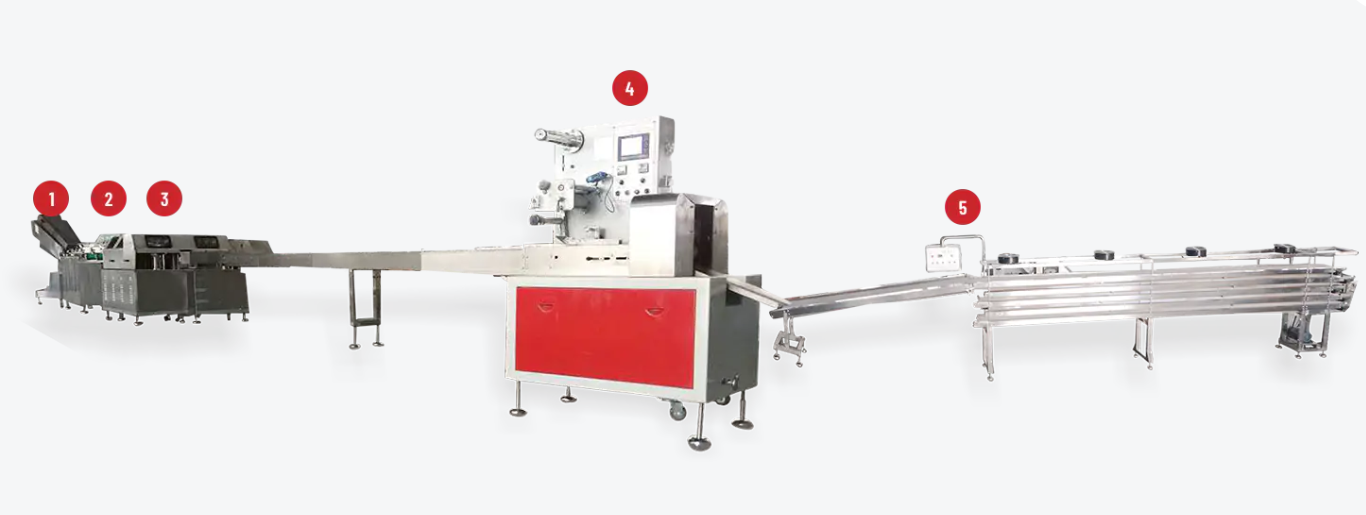
How Spoon Candy Machines Work
The Spoon Candy Machine is an innovative piece of equipment that has revolutionized the candy manufacturing industry. It automates the process of creating candy spoons, allowing manufacturers to produce large volumes of uniform, high-quality candy products efficiently and consistently.
1. Ingredient Preparation and Heating
The process begins with the preparation of the candy mixture, which typically consists of sugar, corn syrup, water, and other flavorings or colorants. This mixture is heated in specialized chambers or kettles to a precise temperature, ensuring that it melts smoothly without burning. The Spoon Candy Machine is equipped with advanced heating systems that allow for uniform temperature control, which is crucial for achieving the right consistency in the candy.
Key Points:
The candy mixture is heated to the ideal temperature for molding.
Precise temperature control ensures a smooth and consistent texture.
The Spoon Candy Machine can handle a wide variety of candy formulations.
2. Molding Process
Once the candy mixture reaches the correct temperature and consistency, it is ready for molding. The Spoon Candy Machine features a mold-based system that shapes the candy into spoon-like forms. The liquid candy is dispensed into molds designed to create the desired spoon shape. The molds are often made of food-safe, durable materials that ensure easy release of the candy after it has cooled and solidified.
The molding section of the Spoon Candy Machine operates with precision to ensure that each candy spoon is uniform in size and shape. Some advanced models of this machine are equipped with automatic mold alignment and adjustment systems that optimize the molding process.
Key Points:
The liquid candy is dispensed into molds designed to create spoons.
Precision in mold filling ensures uniformity in each candy spoon.
Some machines offer automatic mold alignment to improve production efficiency.
3. Spoon Placement and Alignment
In many Spoon Candy Machines, the candy is molded onto actual spoons, which are either made from plastic or edible materials. A specialized spoon feeder system is used to place these spoons into the molds before the candy is poured. This feeder system ensures that each spoon is correctly aligned and positioned within the mold, minimizing errors and ensuring that the candy adheres properly to the spoon.
Automated spoon placement is one of the key features that differentiate high-end Spoon Candy Machines from simpler machines. This automation reduces the need for manual labor and ensures that the spoons are placed with the same level of accuracy each time, which is vital for maintaining consistency.
Key Points:
Spoons are placed into molds by an automated spoon feeder system.
Accurate spoon placement ensures a secure bond between the candy and spoon.
Automation reduces the need for manual intervention and increases efficiency.
4. Cooling and Solidification
Once the candy mixture has been poured into the molds and is in contact with the spoon, the next crucial step is cooling. The Spoon Candy Machine utilizes a cooling system that controls the temperature at which the candy solidifies. This cooling process can take place in several different ways, depending on the design of the machine. Some machines use air cooling, while others may use chilled conveyor belts or cooling tunnels.
The cooling system is designed to ensure that the candy solidifies evenly, avoiding cracks, air bubbles, or deformities in the finished product. Controlled cooling is vital to ensure the candy maintains a smooth, shiny finish and that it holds its shape when removed from the mold.
Key Points:
Cooling is done using controlled temperature systems such as air cooling or chilled belts.
Proper cooling ensures a smooth, even finish and prevents deformities.
Cooling times are carefully controlled to optimize the final product.
5. Ejection and Collection
After the candy has cooled and solidified, it is ready to be removed from the molds. The Spoon Candy Machine includes an ejection system that gently removes the candy spoons from the molds without damaging them. Some machines use automatic ejection mechanisms, where the molds open and release the finished candy spoons.
Once ejected, the candy spoons are collected and transferred to packaging or inspection stations. Automated collection systems ensure that the finished products are efficiently transported for further processing or quality control.
Key Points:
The ejection system safely removes the candy spoons from the molds.
Automatic ejection minimizes damage to the product.
The candy spoons are then collected for inspection, packaging, or storage.
6. Quality Control and Packaging
The Spoon Candy Machine often incorporates quality control systems that inspect the finished products for defects such as cracks, size inconsistencies, or contamination. These systems can include visual inspection tools, weight sensors, or even automated cameras that check the appearance and quality of each candy spoon.
Once the candy spoons pass the quality control checks, they are ready for packaging. The Spoon Candy Machine can be integrated with packaging systems that automatically wrap and seal the candy spoons, readying them for distribution.
Key Points:
Automated quality control systems ensure that all candy spoons meet industry standards.
The finished products are packaged and sealed for distribution.
Packaging can be integrated with the machine for an all-in-one solution.
How to Choose the Right Spoon Candy Machine
Choosing the right Spoon Candy Machine is a crucial decision for any candy manufacturer, whether you're running a small-scale artisanal business or operating a large production facility. The right machine can streamline your production process, reduce labor costs, and improve the consistency and quality of your candy products. With various models and features available in the market, selecting the most suitable Spoon Candy Machine can be overwhelming.
1. Determine Your Production Volume and Capacity Needs
The first step in choosing the right Spoon Candy Machine is to assess your production volume and capacity requirements. If you're a small business or an artisan producer, a manual or semi-automatic machine may suffice. However, if you're dealing with large volumes or high demand, a fully automatic or high-output machine will be necessary.
Key Considerations:
Are you producing small batches of custom candy spoons or large-scale, high-volume products?
Will your production volume increase in the near future?
Do you need a machine that can scale with your business growth?
By understanding your current and future production needs, you can choose a machine that offers the right balance of speed, output, and scalability.
2. Consider the Types of Products You Plan to Make
Different Spoon Candy Machines are designed to handle various types of candy production. Some are optimized for standard candy spoons, while others offer flexibility for creating novelty products, multi-layered treats, or even candy with added fillings or decorative elements.
Key Considerations:
What types of candy products do you plan to produce? (e.g., basic candy spoons, layered treats, flavored spoons)
Do you need the ability to customize the shape, size, or design of your candy spoons?
Are you considering seasonal or promotional products that require unique molds?
Choosing a machine that suits your product line ensures that you have the flexibility to create a range of products, offering versatility to meet market demands.
3. Evaluate Automation and Ease of Use
Automation is a significant factor in increasing production efficiency and consistency. When choosing a Spoon Candy Machine, consider the level of automation that fits your business. Fully automatic machines can handle the entire production process, from mixing and molding to cooling and packaging, reducing manual labor and minimizing human error. However, semi-automatic machines can still offer a great level of control while being more budget-friendly.
Key Considerations:
Do you need a fully automated system, or would a semi-automatic machine be sufficient?
Is the machine easy to operate, and does it have an intuitive control panel?
Does the machine offer flexibility in adjusting settings like pouring speed, temperature, and mold design?
The right level of automation will depend on your production goals, labor availability, and budget. Make sure the machine you choose is user-friendly and aligns with your operational needs.
4. Assess Machine Durability and Maintenance Requirements
The durability of a Spoon Candy Machine is essential for long-term operation, especially if you’re planning for high-volume production. Machines made from high-quality materials such as stainless steel tend to last longer and are easier to maintain. Additionally, consider how easy it is to clean and maintain the machine to ensure hygiene standards are met, particularly when working with food products.
Key Considerations:
What materials is the machine made from? Are they durable and resistant to wear and tear?
How easy is it to clean and sanitize the machine to maintain food safety standards?
Does the machine require frequent maintenance, or is it low-maintenance?
A durable and easy-to-maintain Spoon Candy Machine can save you time and money in the long run while ensuring the safety and quality of your products.
5. Check for Flexibility and Customization Options
Flexibility is another key factor when choosing a Spoon Candy Machine. Some machines offer modular designs that allow for adjustments and add-ons as your business needs evolve. Customization options such as adjustable molds, temperature controls, and mold-change features can help you diversify your product range and adapt to seasonal or promotional demands.
Key Considerations:
Can the machine handle various types of molds and candy designs?
Does it offer adjustable settings for different candy formulas (e.g., temperature control, dispensing speed)?
Are there options for creating different flavors, shapes, or decorations?
If you're looking to experiment with new product types or target different market segments, a machine with customizable features will offer the flexibility to meet those needs.
6. Consider the Machine's Energy Efficiency
In today's manufacturing environment, energy consumption is a critical consideration. A Spoon Candy Machine that operates efficiently can significantly reduce operational costs over time. Look for machines that feature energy-efficient motors, heating systems, and cooling mechanisms, which can help lower energy consumption while maintaining optimal production speeds.
Key Considerations:
How energy-efficient is the machine? Does it have energy-saving features like automatic shut-off or optimized heating?
Will energy consumption impact your overall production costs in the long run?
Are there any sustainability certifications or energy-efficiency ratings associated with the machine?
Choosing an energy-efficient machine not only reduces costs but also aligns your business with sustainable practices, which can be a selling point for environmentally conscious consumers.
7. Evaluate Support and After-Sales Service
When investing in a Spoon Candy Machine, it's important to consider the support and after-sales service provided by the manufacturer or supplier. Look for vendors who offer reliable customer service, machine warranties, and access to spare parts and maintenance services. A good after-sales service ensures that your machine operates smoothly and that you have the support needed if any issues arise.
Key Considerations:
Does the supplier offer comprehensive customer support, including technical assistance and troubleshooting?
What is the warranty period for the machine, and what does it cover?
Are spare parts readily available, and how easy is it to get replacement components?
Good after-sales support can prevent long downtimes and ensure that your Spoon Candy Machine continues to operate efficiently over time.
A Complete Guide to Maintaining and Extending the Lifespan of Your Spoon Candy Machine
A Spoon Candy Machine is a significant investment for any candy manufacturer, and like all machinery, it requires regular maintenance and care to ensure it operates efficiently and lasts for many years. Proper upkeep not only extends the lifespan of the machine but also ensures consistent product quality, prevents downtime, and reduces costly repairs.
1. Regular Cleaning and Sanitization
Cleaning is a vital aspect of maintaining any food production equipment, and the Spoon Candy Machine is no exception. Since the machine is used for food production, it's crucial to maintain high hygiene standards to prevent contamination and ensure compliance with food safety regulations.
Key Maintenance Tips:
Daily Cleaning: After each production cycle, thoroughly clean all parts that come into contact with the candy, including molds, dispensers, and trays. Use warm water and food-safe cleaning agents to remove any residual candy and prevent the buildup of sticky residues.
Deep Cleaning: Perform a deeper cleaning on a regular basis, especially in areas that are harder to reach. This includes internal parts like heating elements, cooling systems, and the pouring mechanism.
Sanitize: Always sanitize the machine at the end of each cleaning session to eliminate bacteria and other pathogens.
Why It's Important:
Prevents contamination and ensures food safety.
Maintains the performance of the machine by keeping parts free from sticky residues.
Reduces the risk of cross-contamination between batches.
2. Lubrication of Moving Parts
Lubricating the moving parts of the Spoon Candy Machine is essential to prevent wear and tear and ensure smooth operation. Over time, parts like gears, belts, and motors can experience friction, leading to faster deterioration if not properly maintained.
Key Maintenance Tips:
Regular Lubrication: Check and lubricate all moving parts, including conveyor belts, motors, and gears, as per the manufacturer's instructions. Use the appropriate food-grade lubricant to avoid contamination of the candy.
Inspect for Wear: Regularly inspect parts for signs of wear or damage, such as fraying belts or misaligned gears, and replace them promptly to avoid operational issues.
Why It's Important:
Prevents premature wear and tear on critical parts of the machine.
Ensures smooth and quiet operation, reducing noise and vibration.
Extends the machine's lifespan by reducing the risk of damage from friction.
3. Check and Calibrate Temperature and Speed Settings
Temperature control is crucial in candy production, as even slight variations can affect the texture and consistency of the final product. A Spoon Candy Machine relies on precise temperature settings for tasks like melting, pouring, and cooling candy. Ensuring that these settings are accurate is essential for consistent product quality.
Key Maintenance Tips:
Monitor Temperature Control: Regularly check the machine's temperature sensors and controllers to ensure they are working accurately. If the temperature deviates from the recommended range, recalibrate the settings or replace faulty components.
Speed Calibration: Ensure that the dispensing speed, mold filling, and cooling times are consistent and in line with your production needs. Make adjustments as necessary, particularly if you're changing candy formulas or production volume.
Why It's Important:
Ensures the candy is produced with the right texture and consistency.
Prevents overheating or underheating that could damage the machine or product.
Helps maintain uniformity in each batch of candy.
4. Inspect and Clean the Cooling System
The cooling system of the Spoon Candy Machine is vital for ensuring that the candy sets properly and retains its shape. A malfunctioning or dirty cooling system can lead to uneven cooling, resulting in defects like cracks or soft spots in the candy spoons.
Key Maintenance Tips:
Clean Cooling Units: Ensure that air vents, cooling tunnels, or chilled conveyors are free from dust and candy buildup. Clean these components regularly to maintain proper airflow.
Check for Blockages: Inspect the cooling system for any blockages that could obstruct airflow or cooling efficiency. Clear any debris or material buildup to maintain optimal cooling performance.
Why It's Important:
Prevents product defects like cracks, deformities, or uneven texture.
Ensures that cooling happens at the correct rate, helping the candy maintain its structure and appearance.
Increases the lifespan of the cooling system and reduces the risk of costly repairs.
5. Examine the Spoon Feeding and Molding System
The spoon placement and molding system of the Spoon Candy Machine must be regularly inspected to ensure that the spoons are properly aligned and that the molds are functioning correctly. Misalignment can lead to poor-quality products or even damage to the machine.
Key Maintenance Tips:
Check Spoon Alignment: Inspect the spoon feeding system to ensure that each spoon is positioned correctly in the mold before the candy is dispensed. Misalignment can lead to candy spoons that are uneven or not securely attached to the spoon.
Inspect Molds: Regularly check the molds for signs of wear, cracks, or buildup of candy. Clean and replace molds as needed to ensure the proper formation of candy spoons.
Why It's Important:
Prevents product defects like uneven or improperly molded spoons.
Reduces the risk of damaging the spoon feeding and molding systems.
Ensures smooth and efficient operation, reducing downtime.
6. Perform Regular System Diagnostics
Modern Spoon Candy Machines are often equipped with sensors, control panels, and diagnostic systems that help monitor performance. Regularly performing system diagnostics can help you detect potential issues before they become significant problems, reducing the risk of unexpected breakdowns.
Key Maintenance Tips:
Run Diagnostics: Periodically run diagnostics on the machine's control systems, including sensors and alarms. This can help identify issues like faulty sensors, heating irregularities, or electrical malfunctions.
Check Software Settings: If your Spoon Candy Machine is equipped with programmable settings, ensure that the software is up to date and configured correctly for your production needs.
Why It's Important:
Helps identify and address problems before they disrupt production.
Ensures the machine operates efficiently and within optimal parameters.
Reduces the risk of expensive repairs by catching issues early.
7. Follow the Manufacturer's Maintenance Schedule
Each Spoon Candy Machine comes with a manufacturer's maintenance schedule that outlines when specific maintenance tasks should be performed. Adhering to this schedule is crucial for keeping the machine in good working condition and preventing unnecessary wear.
Key Maintenance Tips:
Follow the Schedule: Ensure that you are performing maintenance tasks at the recommended intervals, including lubricating parts, checking temperature settings, and inspecting critical components.
Record Maintenance Activities: Keep detailed records of all maintenance activities, repairs, and inspections. This will help you track the machine’s condition and ensure that all tasks are completed on time.
Why It's Important:
Ensures that all necessary maintenance tasks are performed on time.
Helps identify recurring issues and track the machine’s overall health.
Increases the overall efficiency and lifespan of the Spoon Candy Machine.
What's Next for Spoon Candy Machines? A Look at Future Developments
As the candy industry continues to evolve, so too do the technologies and machinery that support it. The Spoon Candy Machine, once a simple tool for creating novelty candy spoons, is now at the forefront of innovation in the food manufacturing sector. With the rise of consumer demand for unique, customizable candy products and increasing production requirements, the future of Spoon Candy Machines holds exciting potential.
1. Automation and Smart Technology Integration
The future of the Spoon Candy Machine is undeniably linked to the continued advancement of automation and smart technology. As demand for high-volume production increases, manufacturers are looking for ways to streamline their operations and improve efficiency. Incorporating artificial intelligence (AI), machine learning, and IoT (Internet of Things) capabilities into Spoon Candy Machines will be a game-changer.
Key Trends:
AI for Predictive Maintenance: Future machines will incorporate AI algorithms that can predict when parts are likely to wear out or need maintenance. This proactive approach to maintenance will reduce downtime and ensure the machine operates at peak efficiency.
Smart Controls and Monitoring: Integration with IoT will allow real-time monitoring of machine performance. Operators will be able to track key metrics such as temperature, speed, and production rates remotely, making adjustments as necessary to optimize production.
Self-Adjusting Machines: With smart technology, future Spoon Candy Machines may be able to self-adjust to changing conditions, such as ingredient variability, ambient temperature, or mold alignment. This level of adaptability will enhance both consistency and quality in production.
Why It Matters:
Increased automation reduces labor costs and human error.
Real-time data allows for faster decision-making and optimization.
Predictive maintenance minimizes unplanned downtime, leading to more efficient production.
2. Customization and Personalization Capabilities
Consumer demand for personalized products is a major driver of innovation in the candy industry, and Spoon Candy Machines are not immune to this trend. The future of candy production will see even more customization options, allowing manufacturers to cater to individual preferences and market trends.
Key Trends:
Customizable Candy Shapes and Designs: Future Spoon Candy Machines may allow for more detailed customization in terms of spoon shapes, designs, and even textures. This will cater to specific customer needs, from themed products for holidays and events to intricate, high-end designs for luxury candies.
Flavors and Color Variations: Manufacturers will have the ability to produce multi-flavored or multi-colored candy spoons with greater ease. Future machines may be able to layer different flavors and colors seamlessly during production, offering consumers more creative and personalized options.
Personalization for Branding and Gifting: As the trend for branded and personalized gifts grows, Spoon Candy Machines will likely incorporate features that allow for custom branding, logo integration, or even messages on the candy spoons. This opens up new marketing avenues for businesses targeting specific consumer groups.
Why It Matters:
Personalized products appeal to a broader consumer base.
Customization enhances the brand experience, making candy more memorable.
Catering to niche markets can increase brand loyalty and boost sales.
3. Sustainability and Eco-Friendly Innovations
Sustainability is no longer just a buzzword in the food industry—it's a driving factor behind many innovations, and the candy production sector is no exception. Spoon Candy Machines will likely evolve to incorporate more eco-friendly and sustainable practices, reducing their environmental impact while maintaining high production standards.
Key Trends:
Energy Efficiency: As energy costs rise and sustainability becomes more important, manufacturers will demand Spoon Candy Machines that are energy-efficient. Future machines may be designed with low-energy heating and cooling systems, optimized for minimal power consumption while maintaining high output.
Eco-Friendly Materials: Manufacturers are increasingly looking for ways to reduce their environmental footprint. In the future, Spoon Candy Machines may be equipped to work with biodegradable or recyclable materials for the candy spoons themselves, as well as more eco-friendly packaging options.
Zero-Waste Production: Zero-waste manufacturing processes are becoming a key focus for many industries, including candy production. The next generation of Spoon Candy Machines will likely include features that minimize waste during production, such as more precise dispensing mechanisms or reusing excess materials.
Why It Matters:
Sustainable practices improve brand reputation and appeal to environmentally-conscious consumers.
Reducing energy consumption lowers operational costs.
Eco-friendly materials and zero-waste practices contribute to the overall reduction of environmental impact.
4. Advanced Quality Control Systems
Ensuring product quality is always a priority in food manufacturing. As production speeds increase and product lines diversify, the Spoon Candy Machine will feature more advanced quality control systems to maintain high standards. These systems will help detect and correct issues in real-time, reducing the risk of defects in the finished product.
Key Trends:
Integrated Vision Systems: Future Spoon Candy Machines may incorporate advanced vision systems that use cameras to inspect each candy spoon for defects such as cracks, incorrect shapes, or color inconsistencies. These systems will allow for real-time quality control and quick corrections before products reach the packaging stage.
Weight and Size Monitoring: Machines may be equipped with sensors that ensure each candy spoon is uniform in weight and size. This level of precision ensures that products are consistent and meet the required specifications.
Automated Feedback Loops: As part of the smart machine evolution, future Spoon Candy Machines could automatically adjust parameters like temperature, pouring speed, or cooling time based on the feedback from these quality control systems.
Why It Matters:
Improved product quality leads to fewer defects and returns.
Real-time monitoring ensures that production runs smoothly and meets high standards.
Enhanced consistency in size and shape boosts consumer satisfaction and brand trust.
5. Integration with Other Production Systems
The future of candy production will not just focus on individual machines but also on how these machines integrate into broader manufacturing systems. The Spoon Candy Machine will likely become part of a connected production line, where multiple systems work together seamlessly to improve overall efficiency and output.
Key Trends:
End-to-End Automation: The integration of the Spoon Candy Machine with other automated processes, such as ingredient mixing, packaging, and labeling, will create an end-to-end automated production line. This will further reduce manual labor and streamline operations.
Data Integration and Analytics: Future Spoon Candy Machines will be able to feed data into a centralized system for analytics and reporting. This data can be used to optimize production, track inventory, and analyze trends to help businesses make data-driven decisions.
Why It Matters:
Integration improves overall factory efficiency and reduces bottlenecks.
Data-driven insights enable better decision-making and process optimization.
A fully connected system enables faster, more agile production capabilities.
The future of Spoon Candy Machines is bright, with a focus on automation, customization, sustainability, and advanced technology. As the industry moves towards greater efficiency, smarter production, and more sustainable practices, businesses will need to invest in the latest innovations to stay competitive. The trends highlighted in this article point to a future where Spoon Candy Machines are not just more efficient and reliable but also offer increased flexibility, customization, and environmental responsibility.
For businesses looking to stay ahead of the curve, it's important to keep an eye on these trends and incorporate new technologies that can improve both production processes and product quality. If you're interested in learning more about state-of-the-art Spoon Candy Machines or need a reliable supplier for your candy production line, visit Flyloong Candy Machine to explore our innovative solutions.


 ENG
ENG
 English
English 中文简体
中文简体 русский
русский Français
Français Español
Español عربى
عربى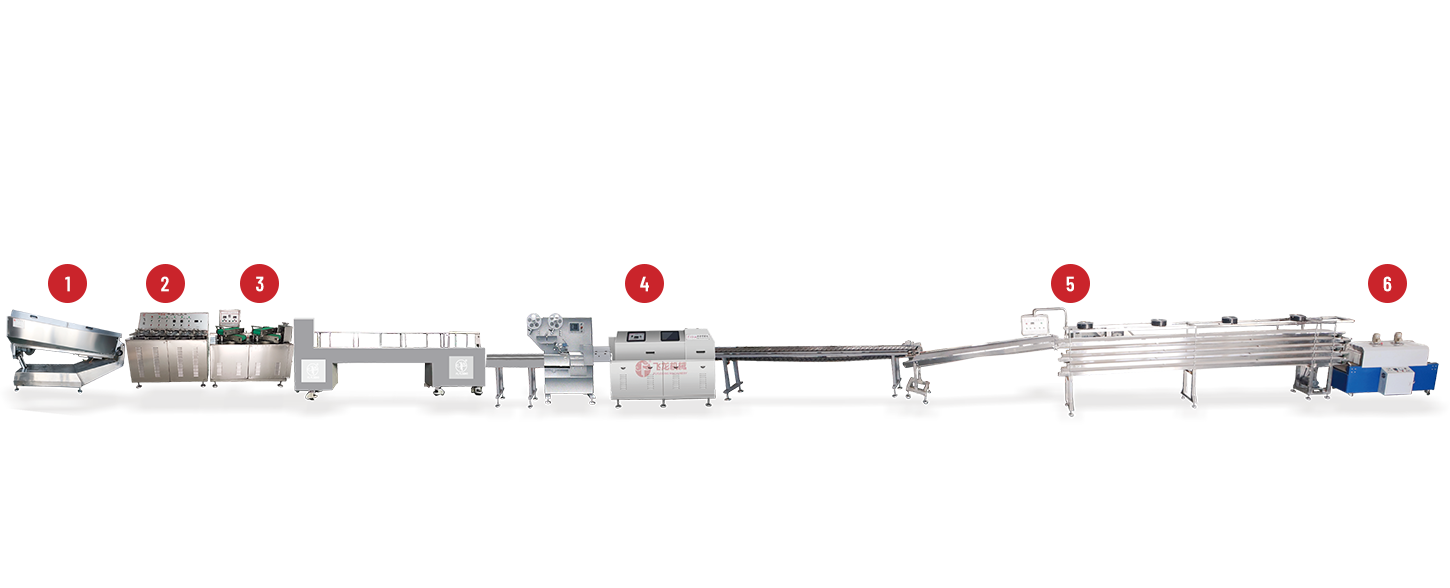
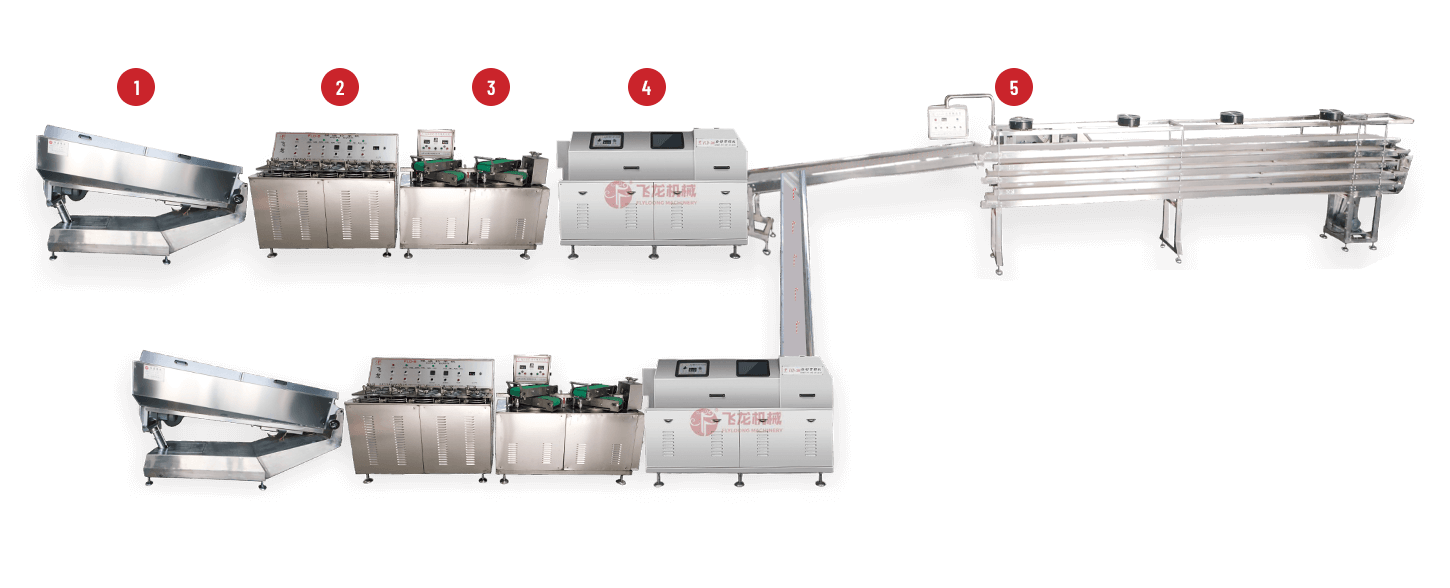

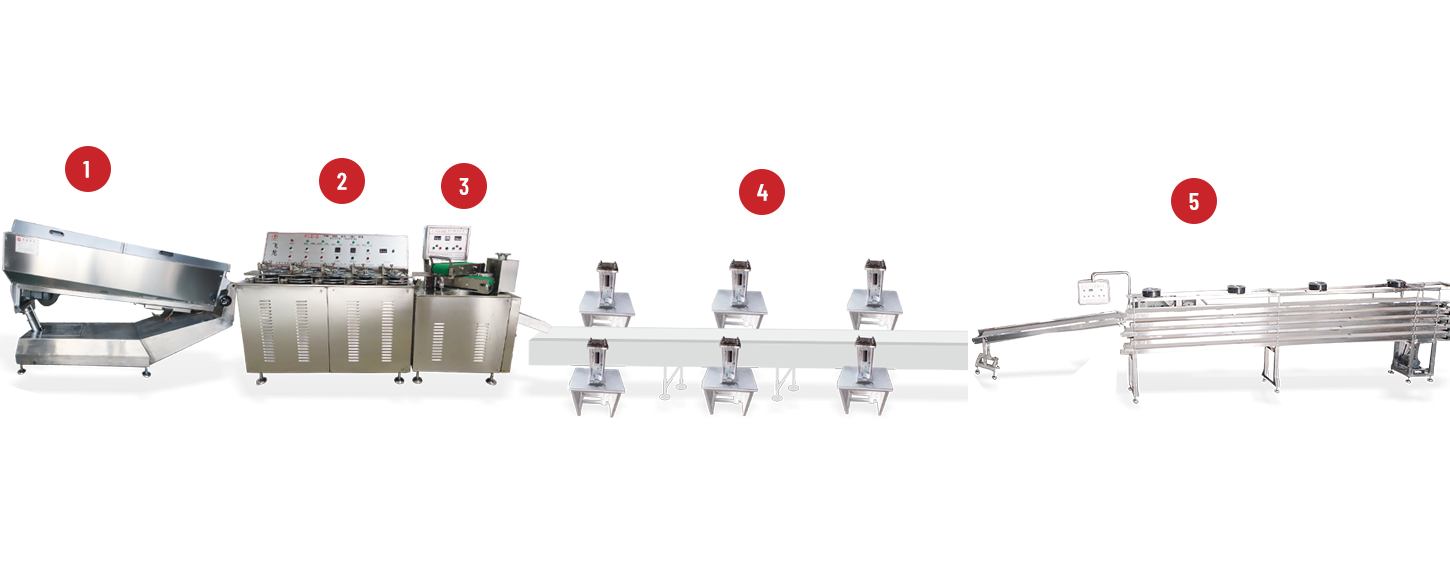
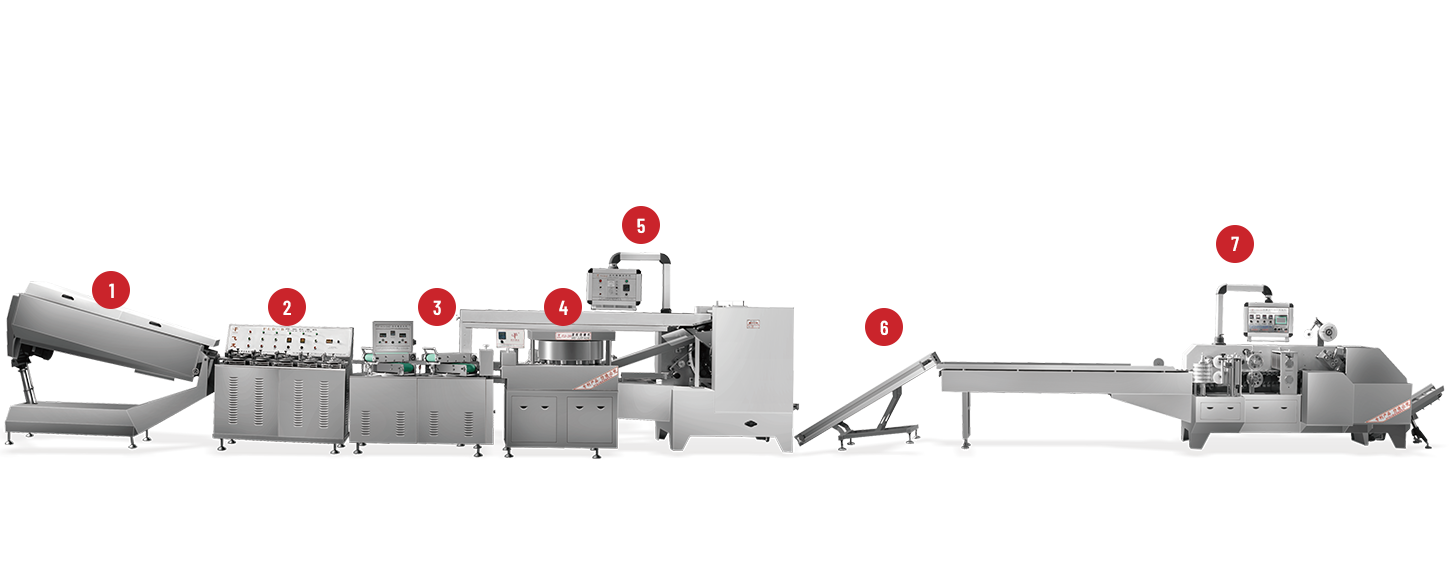
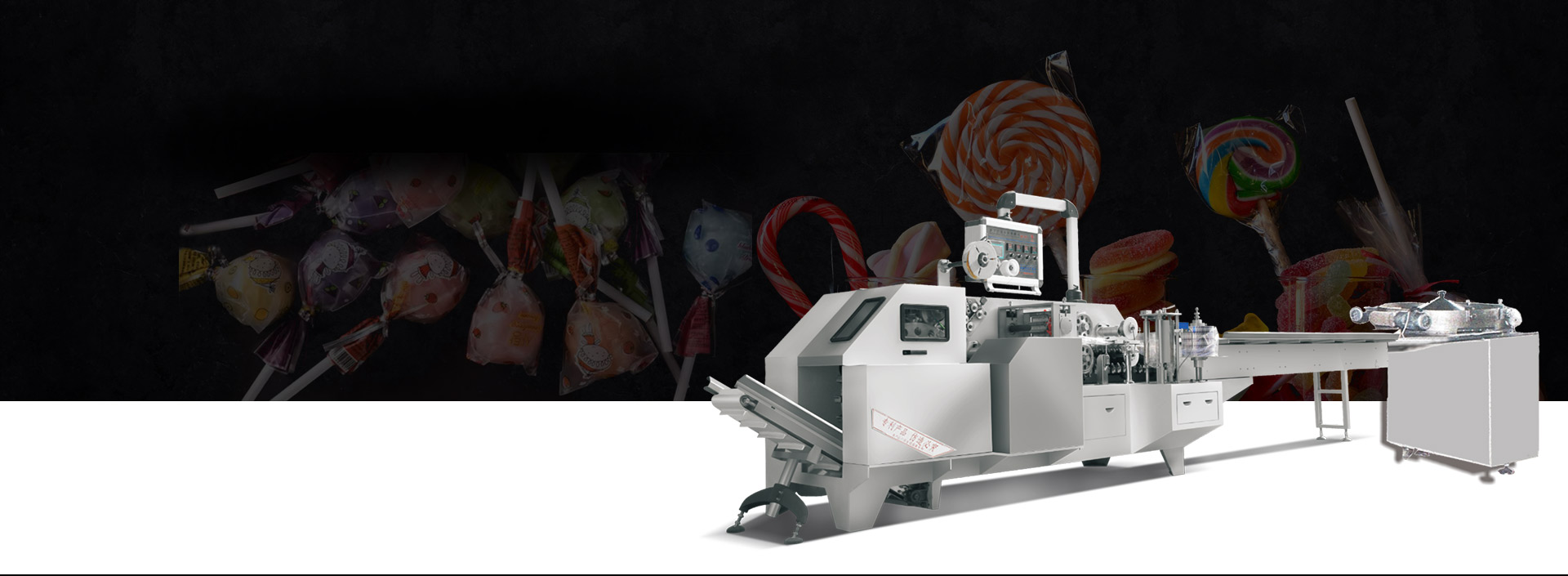
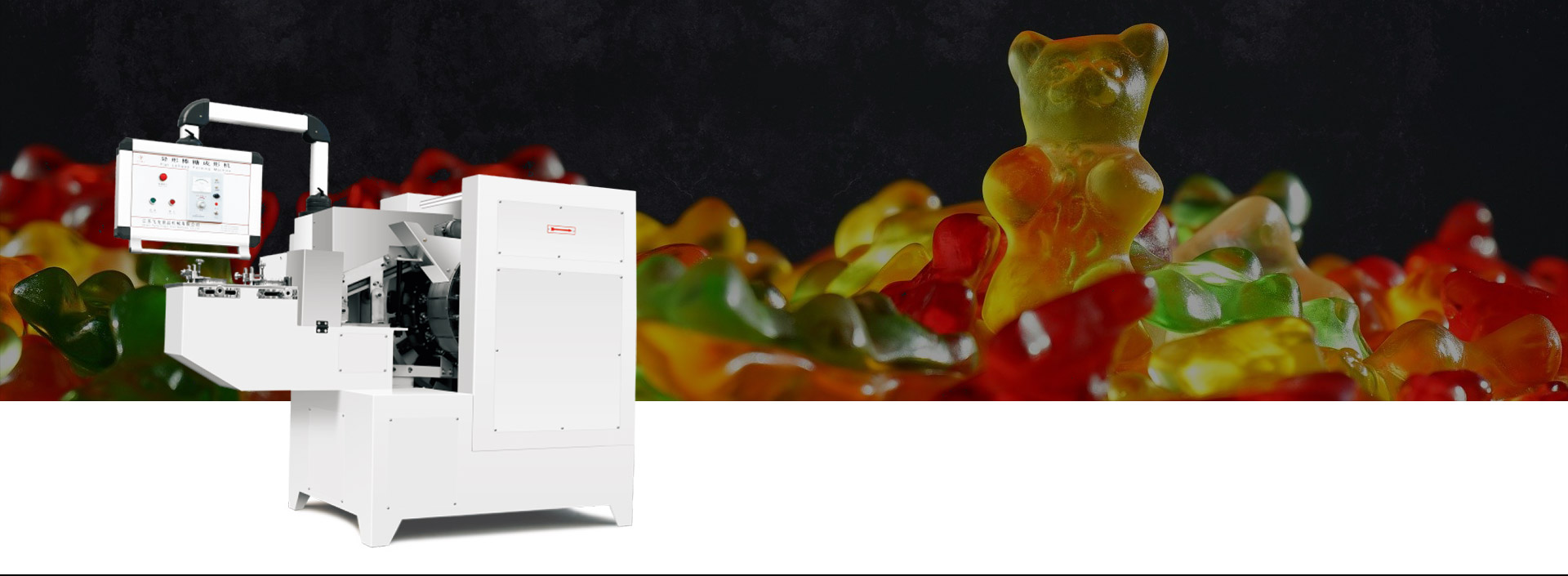
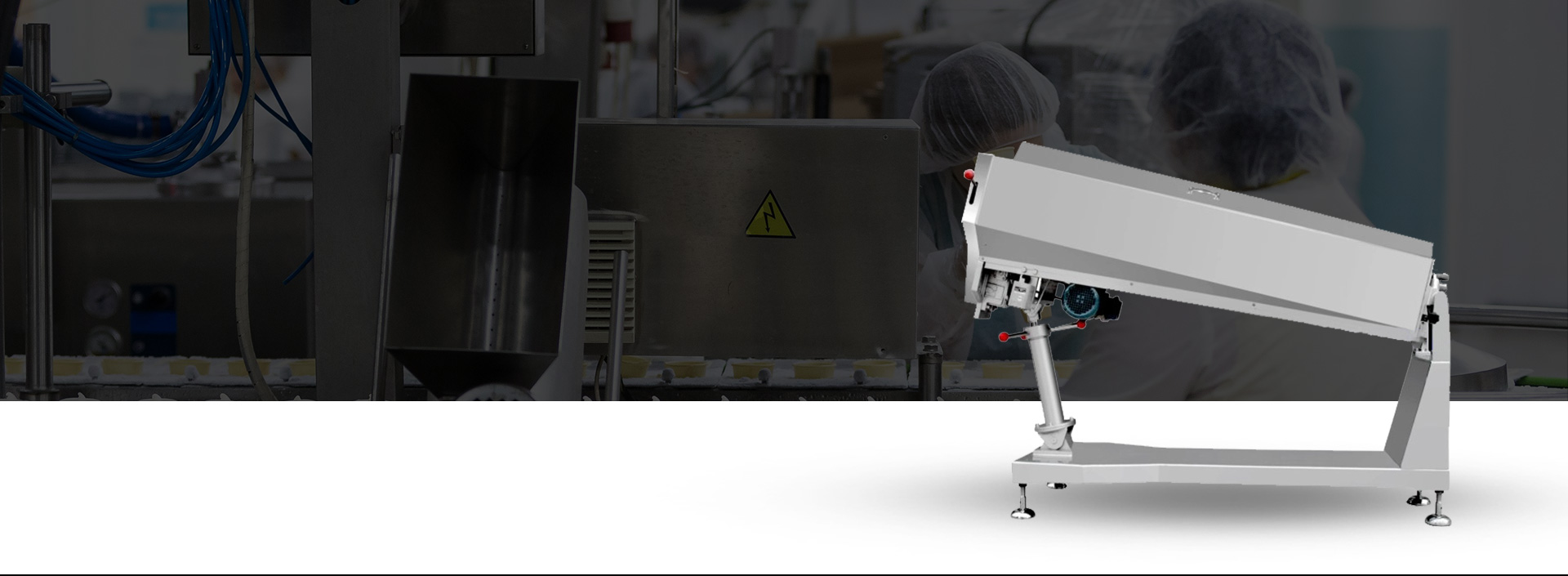
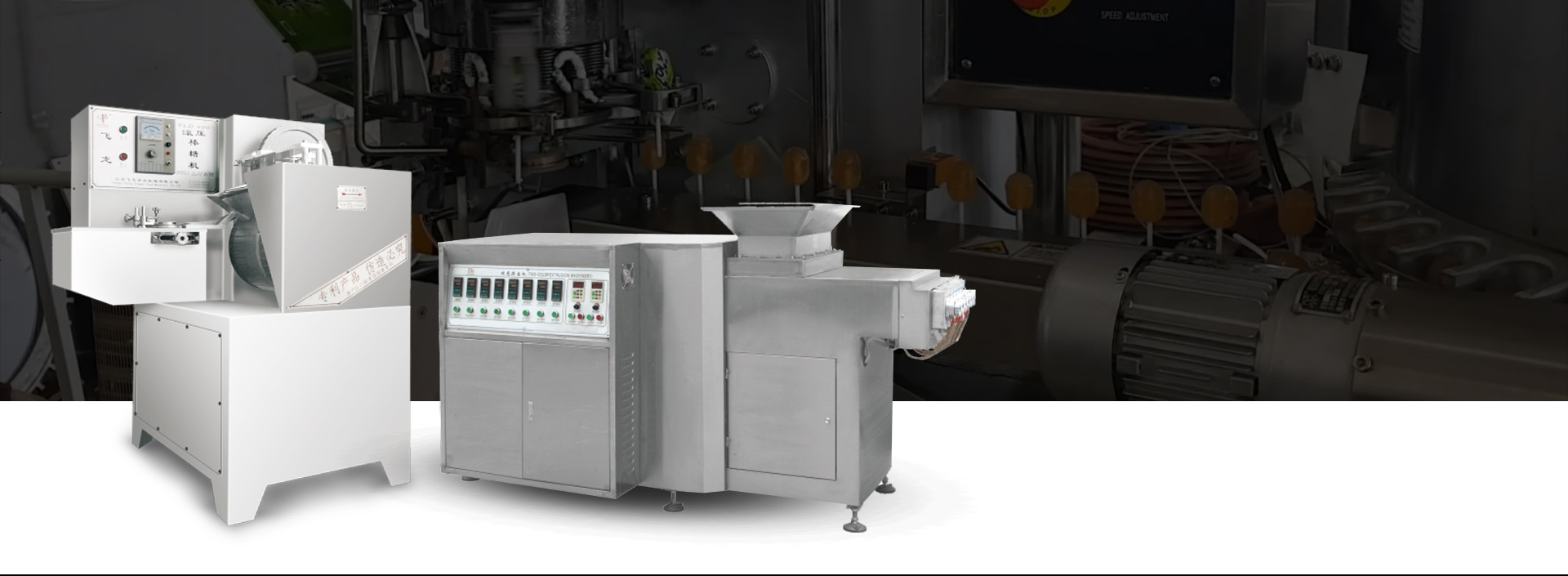
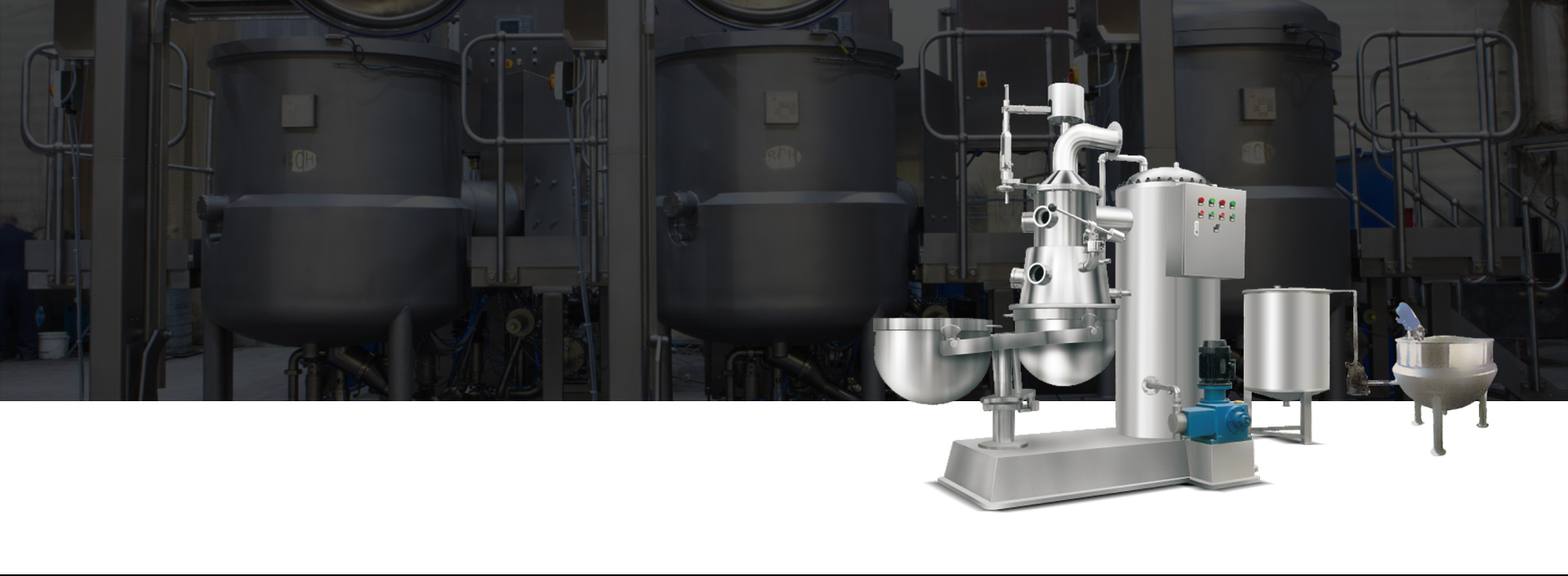

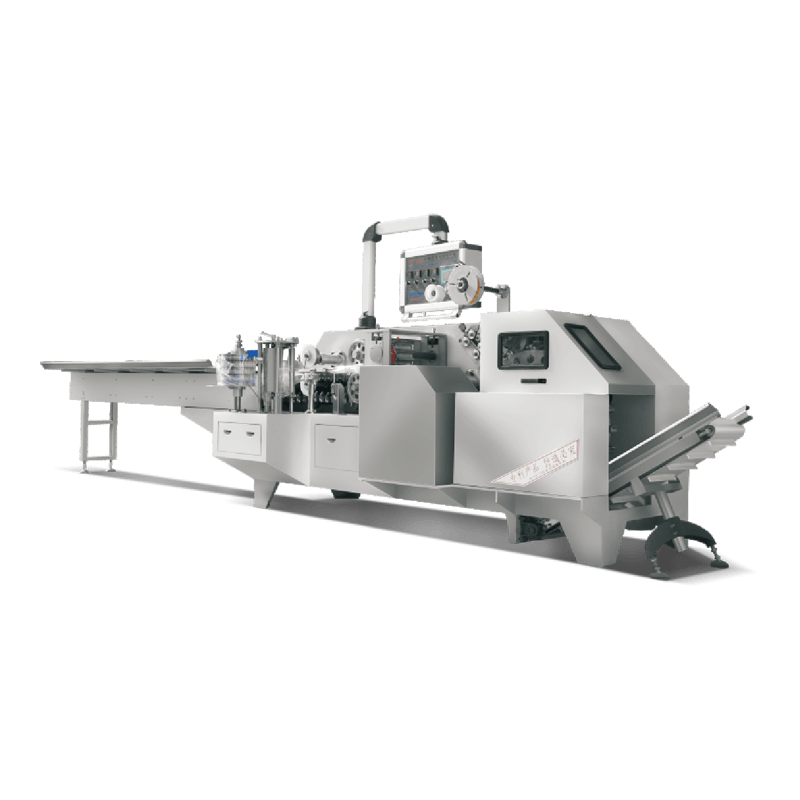
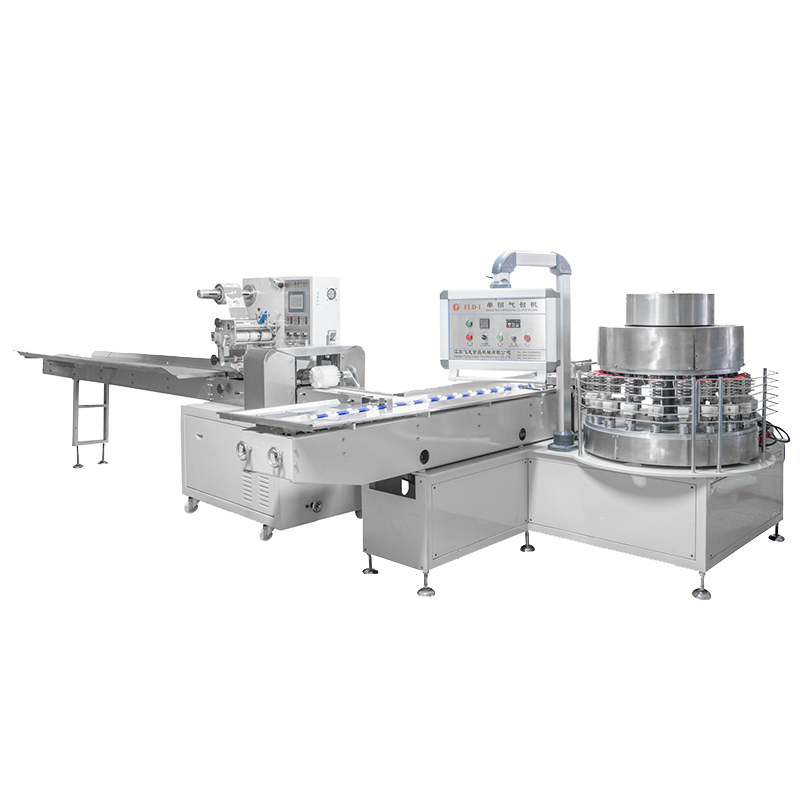
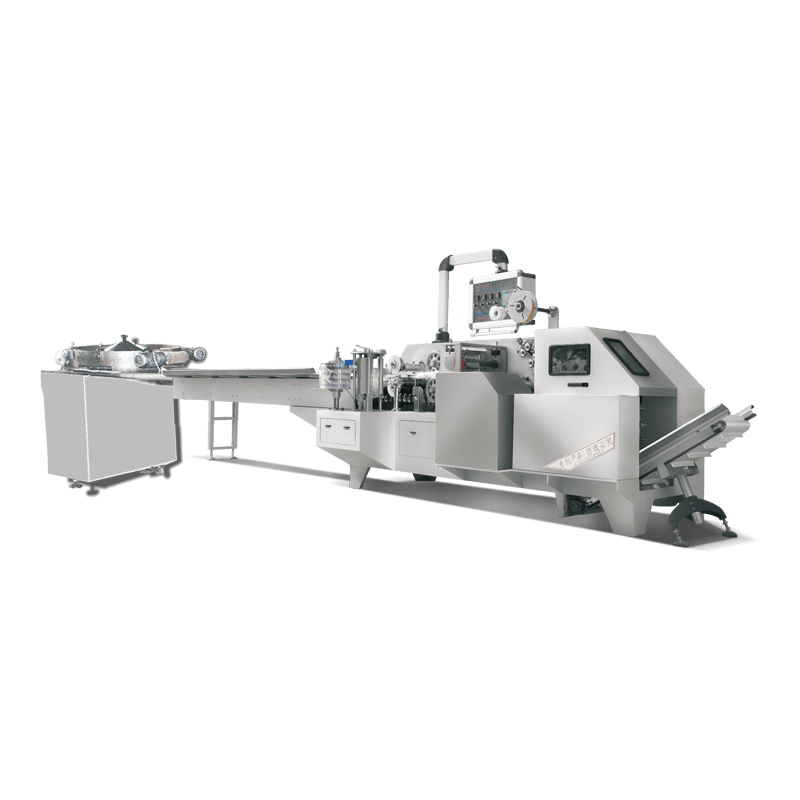
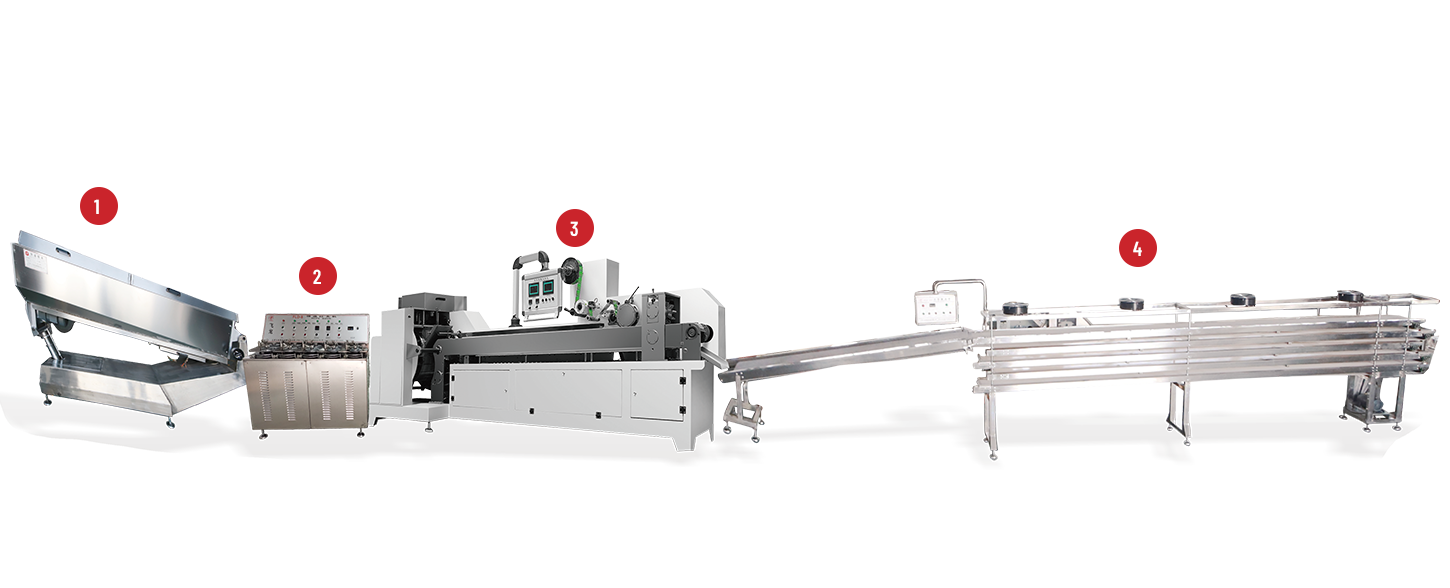
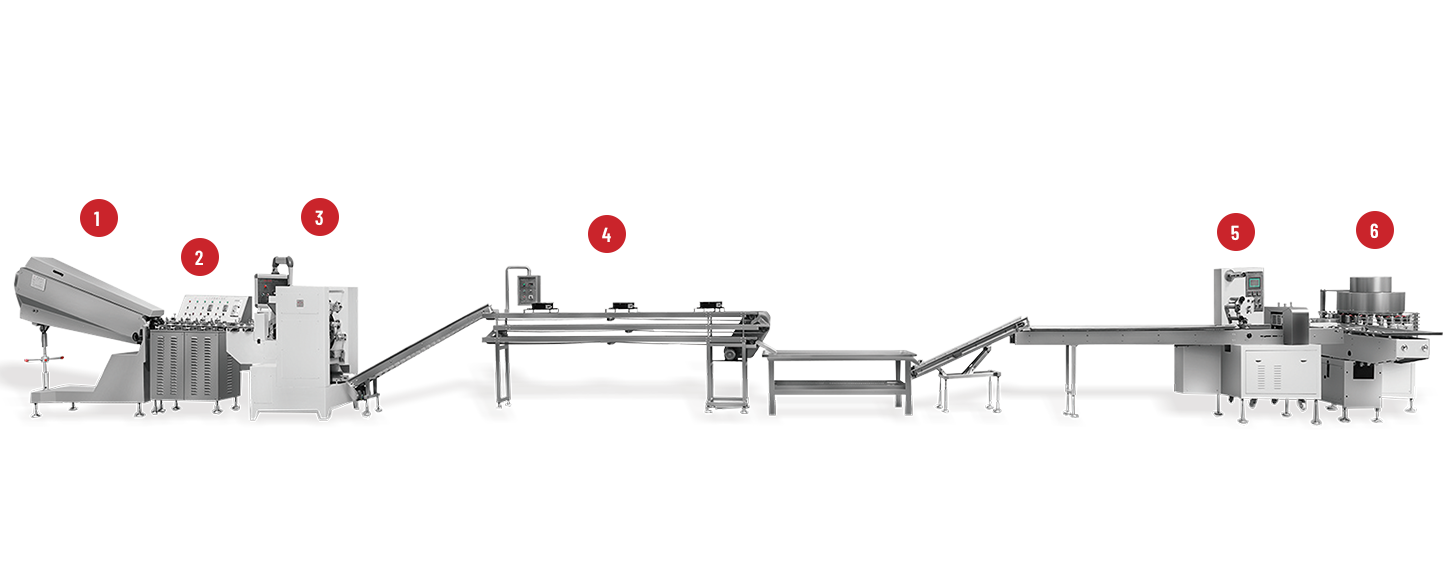
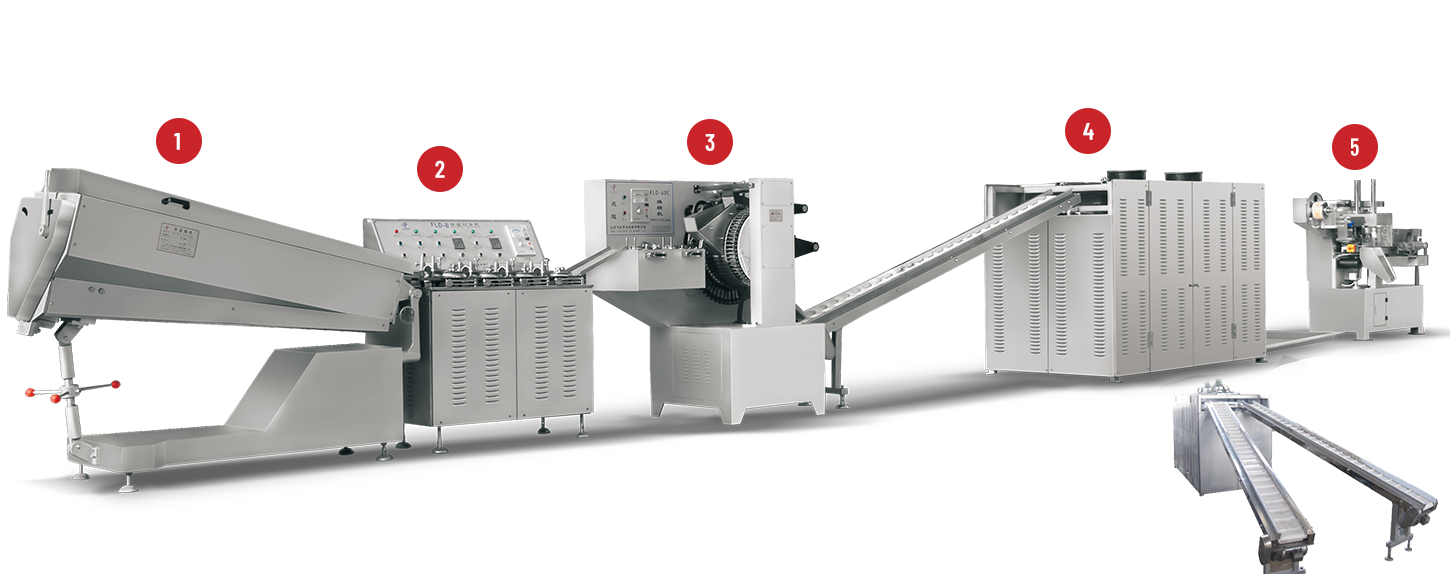
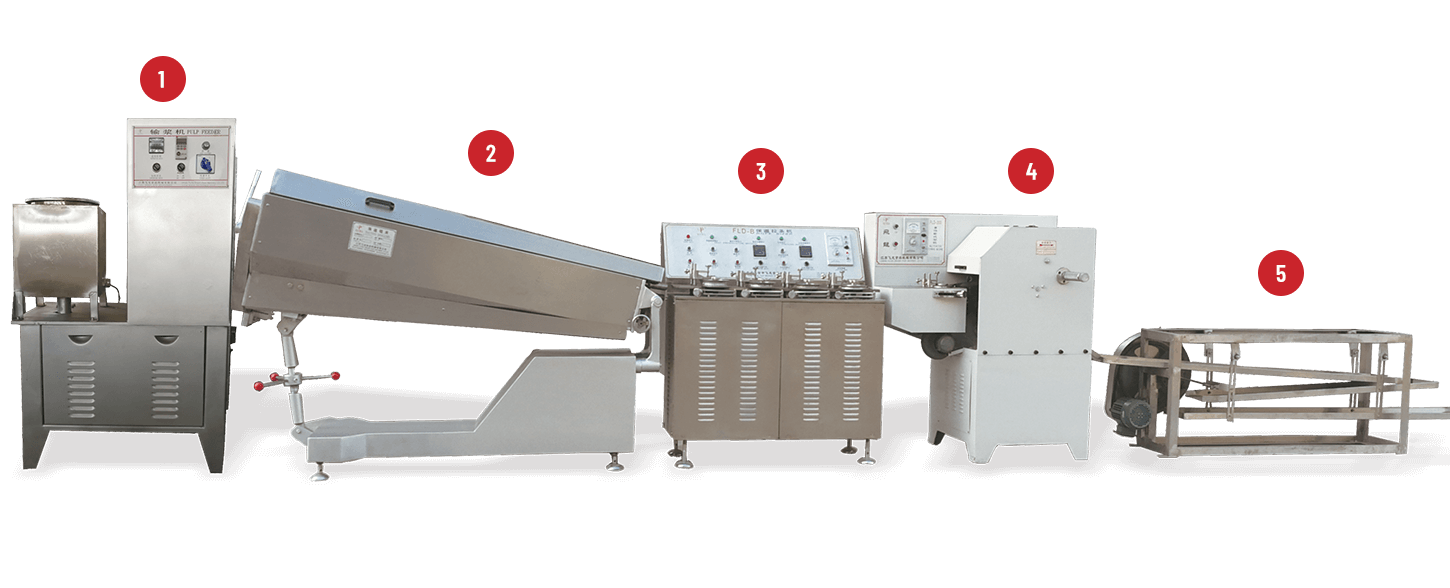
 +86-(0)515-8465666
+86-(0)515-8465666 +86-(0)515-85566996
+86-(0)515-85566996 +86-138 1559 9708
+86-138 1559 9708 flyloong@flyloongcn.com
flyloong@flyloongcn.com 
 Home
Home